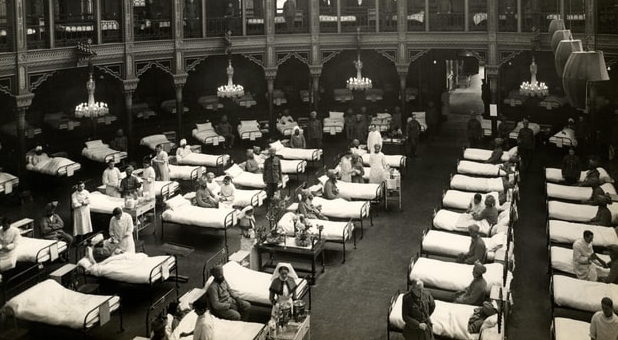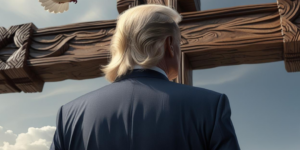Pentecostal Historian: What Deadly Spanish Flu in 1918 Can Teach Us About COVID-19
Everyone is talking about the coronavirus pandemic nowadays. And it’s no wonder—our generation hasn’t seen a disease like this sweep the world so quickly. But it’s not the first time it’s ever happened. The Spanish flu of 1918 was, in many ways, even more devastating to the United States.
Dr. Daniel Isgrigg—Pentecostal historian and head of the Holy Spirit Research Center at Oral Roberts University—has some profound insight into this historical pandemic and how it can help us understand what’s going on today. I interviewed him for my podcast, where he talked about an article he wrote for the Assemblies of God called “How Pentecostals Responded to the 1918 Spanish Influenza Pandemic.”
Perhaps because of the lack of medical technology, the Spanish flu was much more deadly than COVID-19 has been. In his article, Isgrigg says that upward of 500 million people around the world contracted the Spanish flu, and 50 million died from it. In the United States alone, 675,000 people died from that virus.
Isgrigg was shocked when he saw the similarities between that pandemic and the one we’re facing now.
“The Pentecostal Evangel, which the Assemblies of God has published since the beginning—but at that time, it was called The Christian Evangel—and being an AG historian, I knew they talked a lot about a lot of different things. So I went in there to look for it and one of the first things I found was an announcement that all of the Assemblies of God churches in Springfield had closed due to the Spanish flu and I was just like, ‘Wow, I can’t believe that. That’s exactly where we are today.'”
Isgrigg says it wasn’t just the AG churches that shut down at that time. Almost all Pentecostal denominations did. City and state governing officials requested they not meet so as to keep the virus from spreading.
Right now, many churches across the U.S. are doing the same thing. Countless churches are shutting their doors and only offering their services via livestream. Yet some churches have refused to close despite government stay-at-home orders. For instance, Florida megachurch pastor Rodney Howard-Browne held services on Sunday, March 29, and was arrested for it the following day.
Liberty Counsel quickly took up Howard-Browne’s cause and argued that holding church services is a First Amendment right. The county—and soon after, the entire state—amended the stay-at-home order to allow churches to be exempt and counted as essential.
And Howard-Browne isn’t the only one. Charisma News has reported on multiple churches around the U.S., even in states that don’t count church as essential, that have refused to close their doors. So what is the right thing to do here?
But Isgrigg says that same tension existed during the Spanish flu. He says some churches recorded that the government shutting them was a tactic of the enemy to come against their ministry. And yet other churches’ accounts say they happily complied with the government’s orders to close down during the pandemic.
“They saw themselves as responsible citizens and wanted to try to conform the best they could,” Isgrigg says. “And in some cases, they went to where people were. So for the most part, it seems like they tried their best to obey the authorities that were around them, but they also saw it as a detriment in some ways to advancing the gospel. And so I think that those are the sorts of tensions that the church is always going to live in. In this current situation, people are trying to wrestle with that—is it OK to have my church open, because people need ministering to, they need healing, they need hope in this time?”
Isgrigg shared many more fascinating things about the Spanish flu that correlate to what we’re experiencing now. I encourage you to listen to my full podcast with him to better understand how the church can best respond to COVID-19.




























































